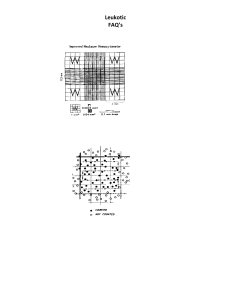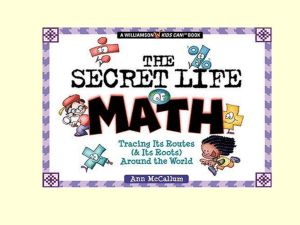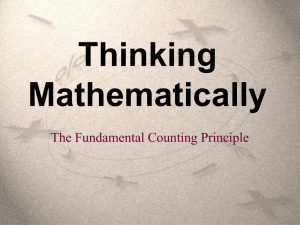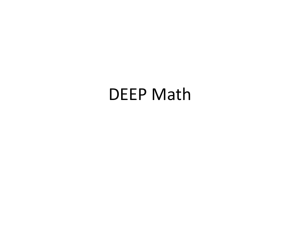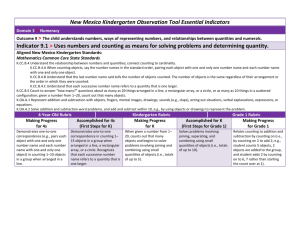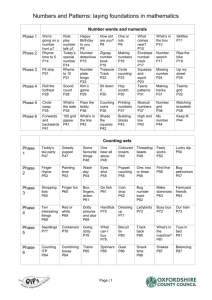Full Disclosure Principle Cost
advertisement
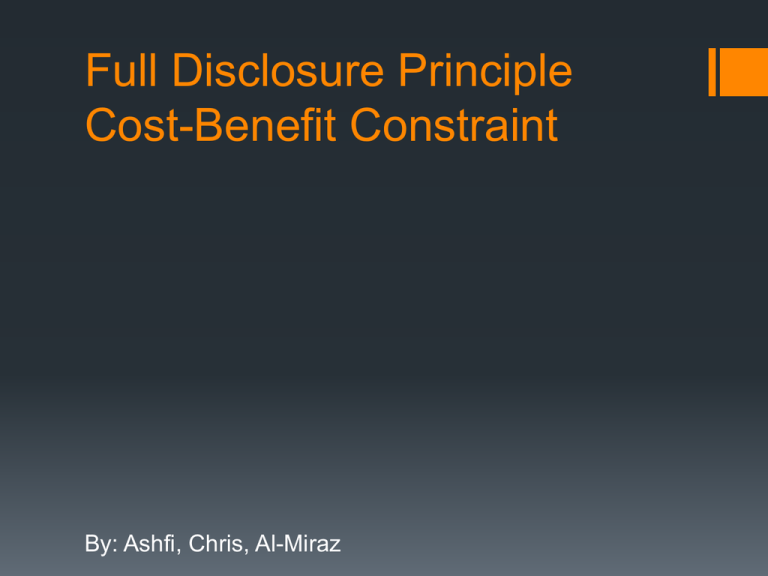
Full Disclosure Principle Cost-Benefit Constraint By: Ashfi, Chris, Al-Miraz Full Disclosure Principle Definition It is the principle which defines that all information that affects any individual who uses the financial statement needs to be divulged to the users. It is represented by two things in the statement, the data contained and accompanying notes What needs to be shown The information that must be shown is the method that was used by a company for inventory, amortization of capital assets, ect. Information that is divulged are part of three categories, they are, proved supplementary detail, explain unrecorded transactions, supply new information An example Al-miraz’s company The Elmo a company that sells toys divulges that the company has chosen the LIFO method of inventory costing and straight line method for amortizing capital assets Cost-Benefit Constraint Definition The value of whatever information is more then the cost of disclosing it. Accountants can disclose every financial event that occurs but this additional information increases cost and the benefits may be less then the cost. Example Take Al-Miraz company The Elmo, is counting the amount of toys it has. Does the cost of counting the toys worth the benefit of counting them? Yes as it gives the company an idea of how much it can sell so the benefit outweighs the cost, so benefits are usually stuff that results in more money not less. Quiz Questions 1. What are three categories of information that needs to be disclosed (Full Disclosure Principal) 2. Is the benefit of counting the amount of ice cubes worth the cost of counting it. Why or why not.


